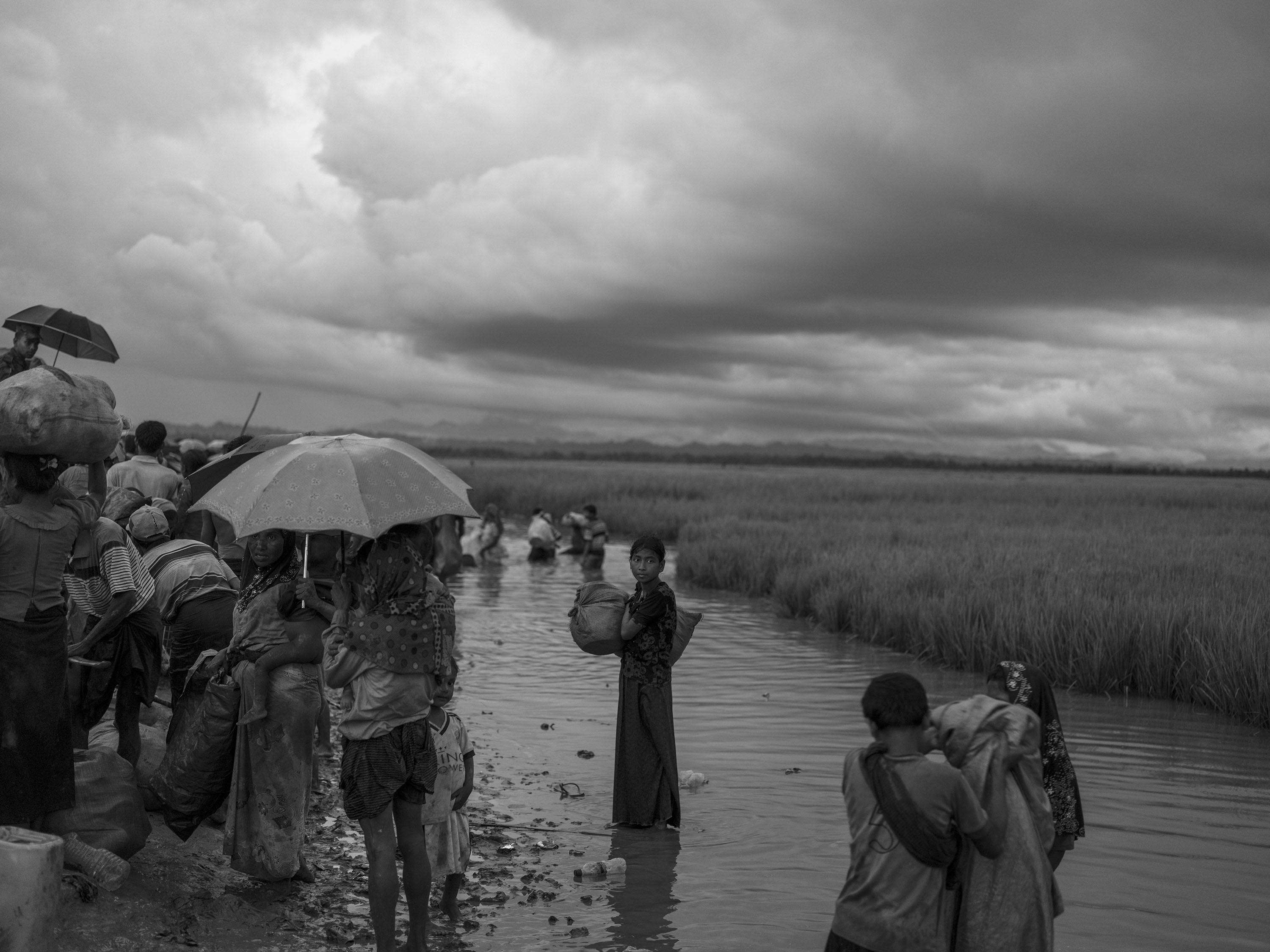NEW YORK/AMSTERDAM/PARIS—At least 9,000 members of the ethnic Rohingya minority died—most of them from violence— in Rakhine state, Myanmar, between August 25 and September 24, according to surveys conducted in refugee settlement camps in Bangladesh and released today by the international medical humanitarian organization Doctors Without Borders/Médecins Sans Frontières (MSF).
Of the reported deaths, 71.7 percent were caused by violence. Using the most conservative estimates, at least 6,700 Rohingya are estimated to have been killed, including at least 730 children under the age of five.
The survey findings demonstrate that the Rohingya people have been targeted; they are the clearest indication yet of the widespread violence that began August 25, when the Myanmar military, police, and local militias launched "clearance operations" in Rakhine in response to attacks by the Arakan Rohingya Salvation Army. Since then, more than 647,000 Rohingya (according to the Inter Sector Coordination Group as of December 12) have fled from Myanmar into Bangladesh.
Learn More About MSF's Response to the Rohingya Refugee Crisis
"We met and spoke with survivors of violence in Myanmar, who are now sheltering in overcrowded and unsanitary camps in Bangladesh," said Dr. Sidney Wong, MSF medical director. "What we uncovered was staggering, both in terms of the numbers of people who reported a family member died as a result of violence and the horrific ways in which they said they were killed or severely injured. The peak in deaths coincides with the launch of 'clearance operations' by Myanmar security forces in the last week of August."
In early November, MSF conducted six retrospective mortality surveys in different sections of the refugee settlements in Cox’s Bazar, Bangladesh, located just over the border from Myanmar. The total population of the areas covered by the surveys was 608,108 people, of which 503,698 had fled Myanmar after August 25.
The overall mortality rate between August 25 and September 24 of households surveyed was 8.0/10,000 people per day. This is equivalent to the death of 2.26 percent (between 1.8 percent and 2.73 percent) of the sampled population. If this proportion is applied to the total population that arrived in the camps since August 25, and which were covered by the survey, it would suggest that between 9,425 and 13,759 Rohingya died during the initial 31 days following the start of the violence, including at least 1,000 children under five.
Click to Enlarge Image
The surveys show that of these deaths, at least 71. 7 percent were due to violence, including among children under five. This represents at least 6,700 people, including 730 children. Overall, gunshot wounds were the cause of death in 69 percent of the violence-related deaths, followed by being burned to death in their houses (9 percent), and beaten to death (5 percent). Among children below the age of five, more than 59 percent killed during that period were reportedly shot, 15 percent were burned to death in their homes, 7 percent were beaten to death, and 2 percent died from landmine blasts.
"The numbers of deaths are likely to be an underestimation, because we have not surveyed all refugee settlements in Bangladesh and because the surveys don’t account for families that never made it out of Myanmar," Wong said. "We heard reports of entire families who perished after they were locked inside their homes and set on fire."
People are still fleeing Myanmar to Bangladesh, and those who manage to cross the border still report being subject to violence over recent weeks.
"With very few independent aid groups able to access Rakhine, we fear for the fate of Rohingya people who are still there," said Wong. "The signing of an agreement between the governments of Myanmar and Bangladesh over the return of refugees is premature. Rohingya should not be forced to return, and their safety and rights need to be guaranteed before any such plans can be seriously considered."




